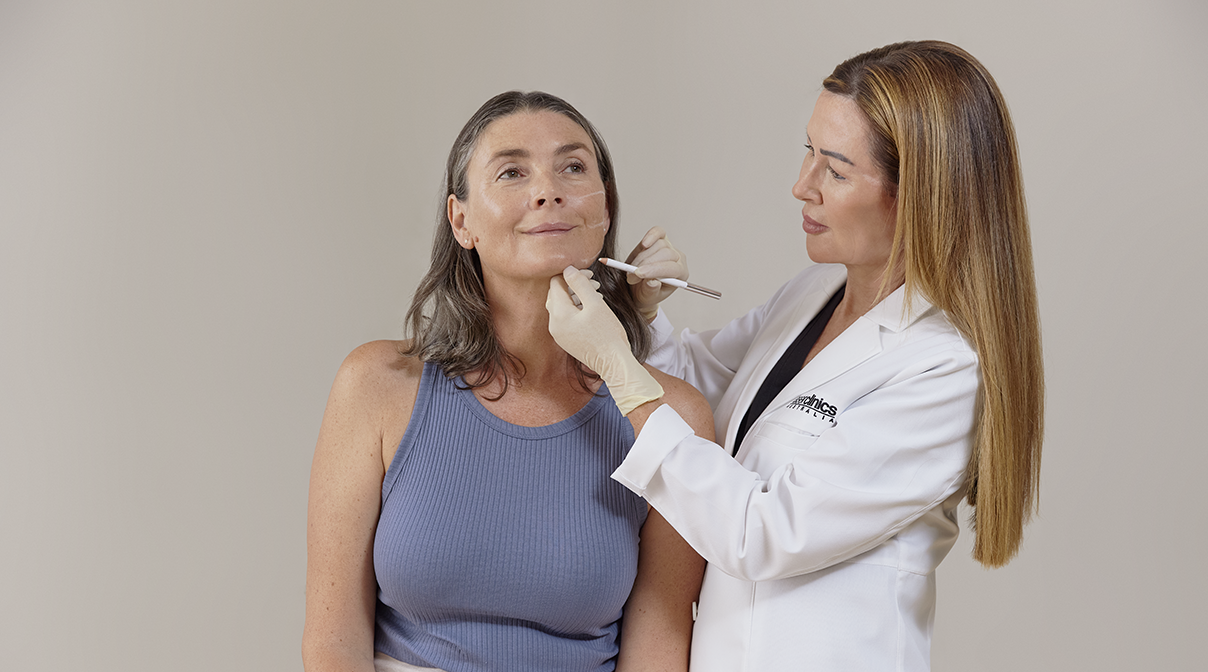Whether it's sun damage, post-acne marks, or melasma, facial pigmentation can be a source of frustration. A perfectly flawless skin may not entirely be realistic, but you have several options to significantly reduce the appearance of pigmentation.
We dive into the world of skin pigmentation treatments, exploring evidence-based options like Skin Needling, Laser Pigmentation Removal, Cosmetic Grade Peels, and more. Remember, seeking guidance from a qualified dermatologist is always the smartest step before starting any new treatment.
Let’s get right into it.
#1. Cosmetic Grade Peels
Cosmetic Grade Peels are a versatile skin resurfacing treatment that can improve a range of concerns, including pigmentation. A Cosmetic Grade peel involves carefully applying a selected acidic solution to remove the skin’s top layers. This reveals the smooth and more evenly-toned complexion underneath.
How Cosmetic Grade Peels Target Pigmentation
The acidic solution speeds up the shedding of dead skin cells, including those that contain excess melanin (the pigment giving the skin its colour).
Cosmetic Grade Peels also stimulate new skin cell production, resulting in a brighter appearance. Some peels also have ingredients like Glycolic Acid and Lactic Acid designed specifically to break down melanin clusters.’
#2. Skin Needling
Skin Needling or Collagen Induction Therapy uses tiny needles to create micro-injuries in the skin. This spurs the skin’s natural wound-healing mechanism, driving a surge of collagen and elastin towards the “injury” site. The result is a much smoother, plumper, and even-toned skin.
The physical action in Skin Needling also breaks down existing melanin clusters, which further reduces the intensity of pigmentation. Some studies suggest Skin Needling may even help regulate melanocytes, or the cells responsible for melanin production. It can help prevent further darkening of already-pigmented areas.
Another unique benefit of Skin Needling is that it indirectly enhances the effectiveness of topical skincare.
The micro-injuries created during treatment allow skin-brightening ingredients like vitamin C, and kojic acid to penetrate deeper into the skin, enhancing their skin pigmentation benefits.
#3. Laser Pigmentation Removal
Topical treatments and Cosmetic Grade Peels can significantly improve pigmentation issues, but in some cases can be stubborn. If you want faster results or if you’ve not found other methods effective, you can explore Laser Pigmentation Removal.
It’s important to understand even lasers aren’t a guaranteed cure-all for pigmentation, especially with conditions like melasma. But the right technology, combined with proper skincare, can create dramatic improvements.
How Laser Pigmentation Removal Works
Laser pigmentation removal works by targeting melanin within darkened areas using focused beams of light.
Different lasers suit different scenarios: Intense Pulsed Light (IPL) is excellent for diffuse pigmentation, while Q-switched lasers expertly target individual spots.
Fractional lasers, particularly non-ablative fractional lasers (NAFL), are gaining popularity due to their lower risk of side effects and their ability to improve overall skin texture and tone in addition to addressing pigmentation.
When considering laser treatment, an experienced dermatologist or laser technician will assess your skin type, the nature of your pigmentation, and your treatment goals. This helps determine the best device and treatment plan.
Laser Clinics Australia offers advanced Laser Pigmentation Removal Treatments tailored to your specific needs. Our team of Registered Nurses, Doctors, and Skilled Therapists use the latest in laser technology to ensure a safe and effective approach for brighter, more even-toned skin.
#4. Sunscreen
You’ve probably heard time and again that excessive sun exposure can lead to premature ageing and skin cancer, but did you realise it’s also a major culprit in causing and worsening pigmentation concerns?
Whether you're battling melasma, sunspots, or post-inflammatory discolouration, sunscreen is also a good defence against pigmentation.
Modern sunscreens have broad-spectrum protection against UVA and UVB rays, come in various textures, and can even provide additional benefits like hydration or tint. Choosing the right sunscreen is key.
Studies even recommend using sunscreen to prevent the development of pigmentation issues, particularly for those considered high-risk (specifically, 30% to 50% of South Americans and Asians who are at risk of developing melasma).
Battling skin pigmentation can feel overwhelming, but understanding the potential causes and the wide range of available treatments empowers you to take control.
If you’re ready to take the next step, our experts at Laser Clinics Australia are here to help. We offer customised consultations to assess your specific skin concerns, discuss the latest in our pigmentation treatments, and develop a Tailored Treatment Plan just for you.
Let’s guide you on your journey towards achieving your skin goals and enjoying the confidence that comes with radiant, healthy skin.









